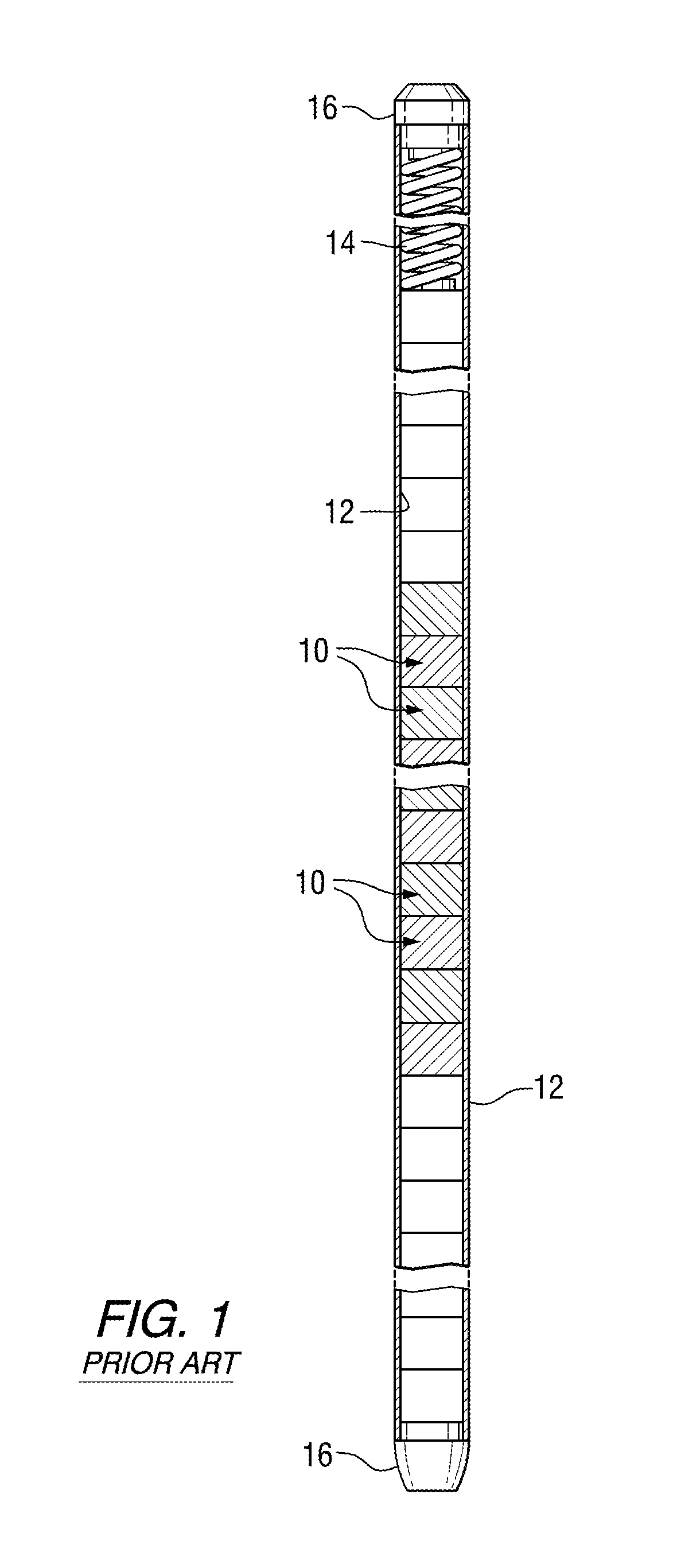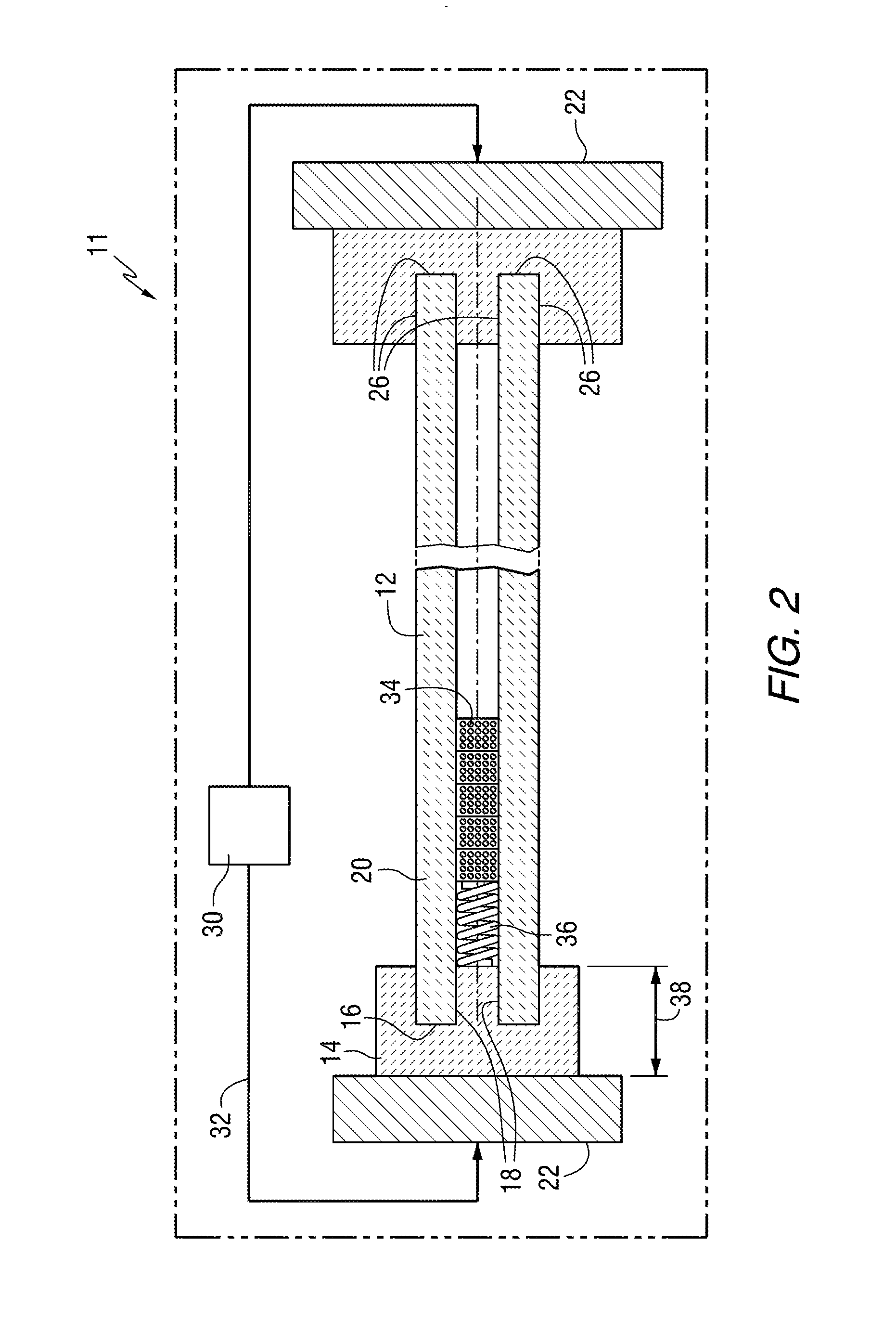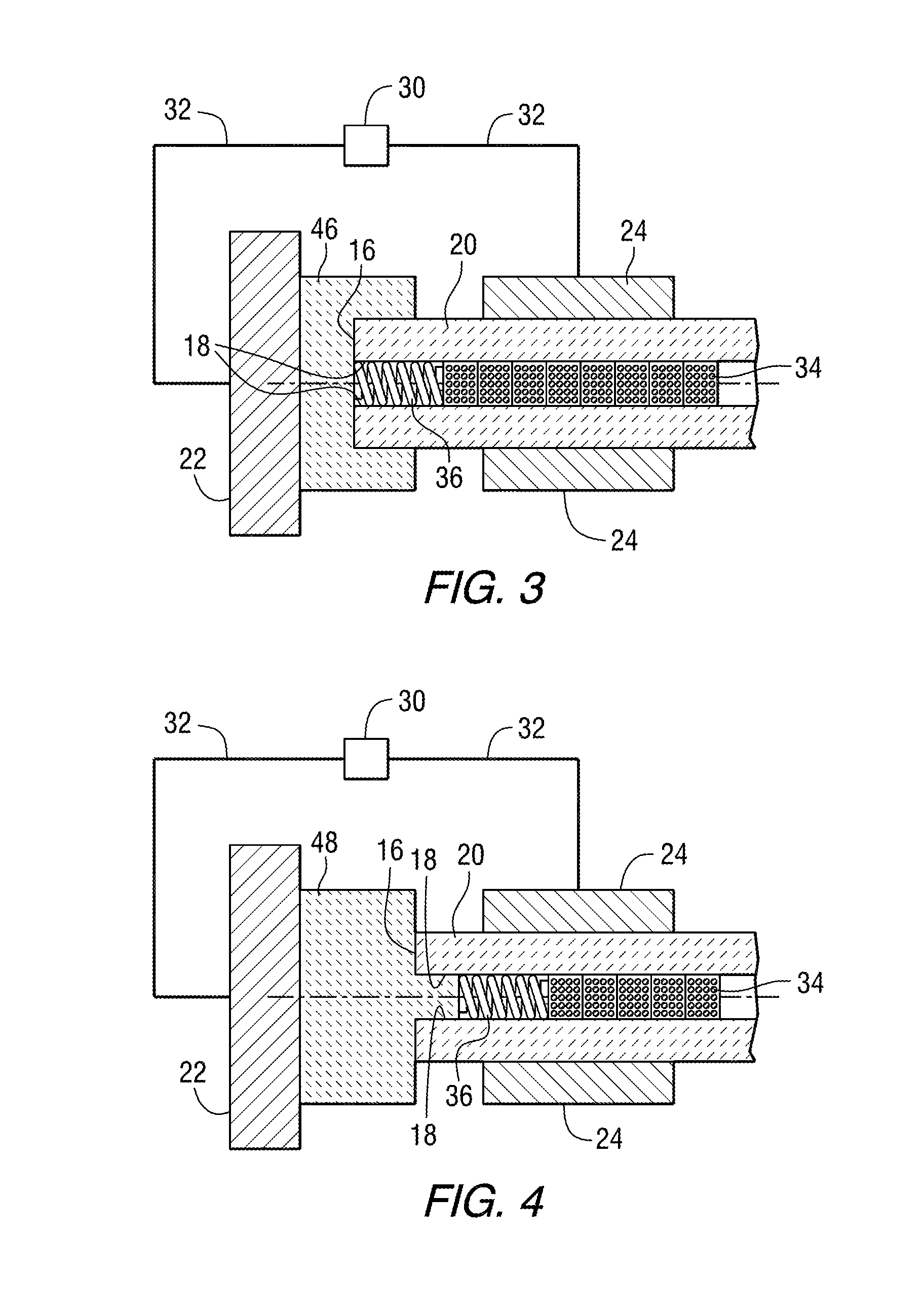Sic matrix fuel cladding tube with spark plasma sintered end plugs
a fuel cladding tube and spark plasma technology, applied in the direction of nuclear engineering, greenhouse gas reduction, nuclear elements, etc., can solve the problems of pushed reactor operating temperature and cladding radiation exposure to extreme limits, and none of them proved successful in a nuclear environmen
- Summary
- Abstract
- Description
- Claims
- Application Information
AI Technical Summary
Benefits of technology
Problems solved by technology
Method used
Image
Examples
example
[0060]A “Ceramic Composite” consisting of a 12 foot (365.76 cm) long extruded stoichiometric alpha phase nuclear reactor SiC tube, for containing nuclear fuel in a reactor, with an inner diameter of 0.32 inches (0.8128 cm) and a wall thickness of 0.015 inches (0.0381 cm) at a density of 95% of the SiC theoretical density, is wound with a 0.026 inch (0.066 cm) layer of SiC composite consisting of 6 layers of windings of stoichiometric beta phase SiC fibers and is infiltrated with beta phase stoichiometric SiC using chemical vapor infiltration to a net density for the composite of greater than 80% of the SiC theoretical density.
[0061]This “Ceramic Composite” was sealed with extruded stoichiometric alpha phase end plugs with highly polished inner and upper tube seal faces as in FIG. 4, applied using plasma spark sintering as well known and previously defined in a chamber filled with helium at 375 psi at ambient condition. The heating rate was 200° C. / minute, with a bonding pressure of ...
PUM
| Property | Measurement | Unit |
|---|---|---|
| Temperature | aaaaa | aaaaa |
| Temperature | aaaaa | aaaaa |
| Temperature | aaaaa | aaaaa |
Abstract
Description
Claims
Application Information
 Login to View More
Login to View More - R&D
- Intellectual Property
- Life Sciences
- Materials
- Tech Scout
- Unparalleled Data Quality
- Higher Quality Content
- 60% Fewer Hallucinations
Browse by: Latest US Patents, China's latest patents, Technical Efficacy Thesaurus, Application Domain, Technology Topic, Popular Technical Reports.
© 2025 PatSnap. All rights reserved.Legal|Privacy policy|Modern Slavery Act Transparency Statement|Sitemap|About US| Contact US: help@patsnap.com



